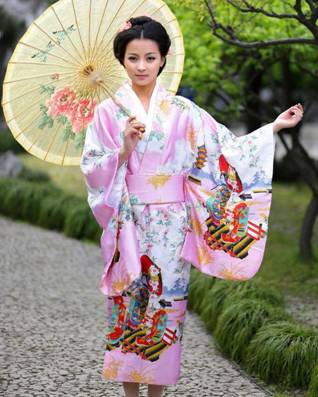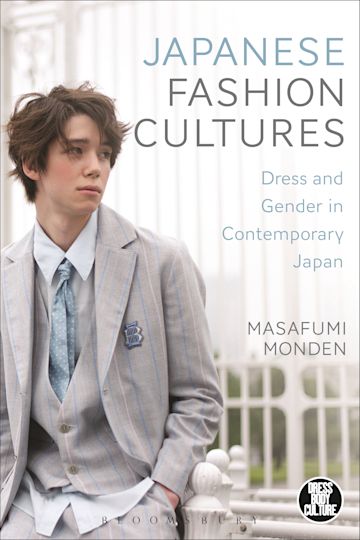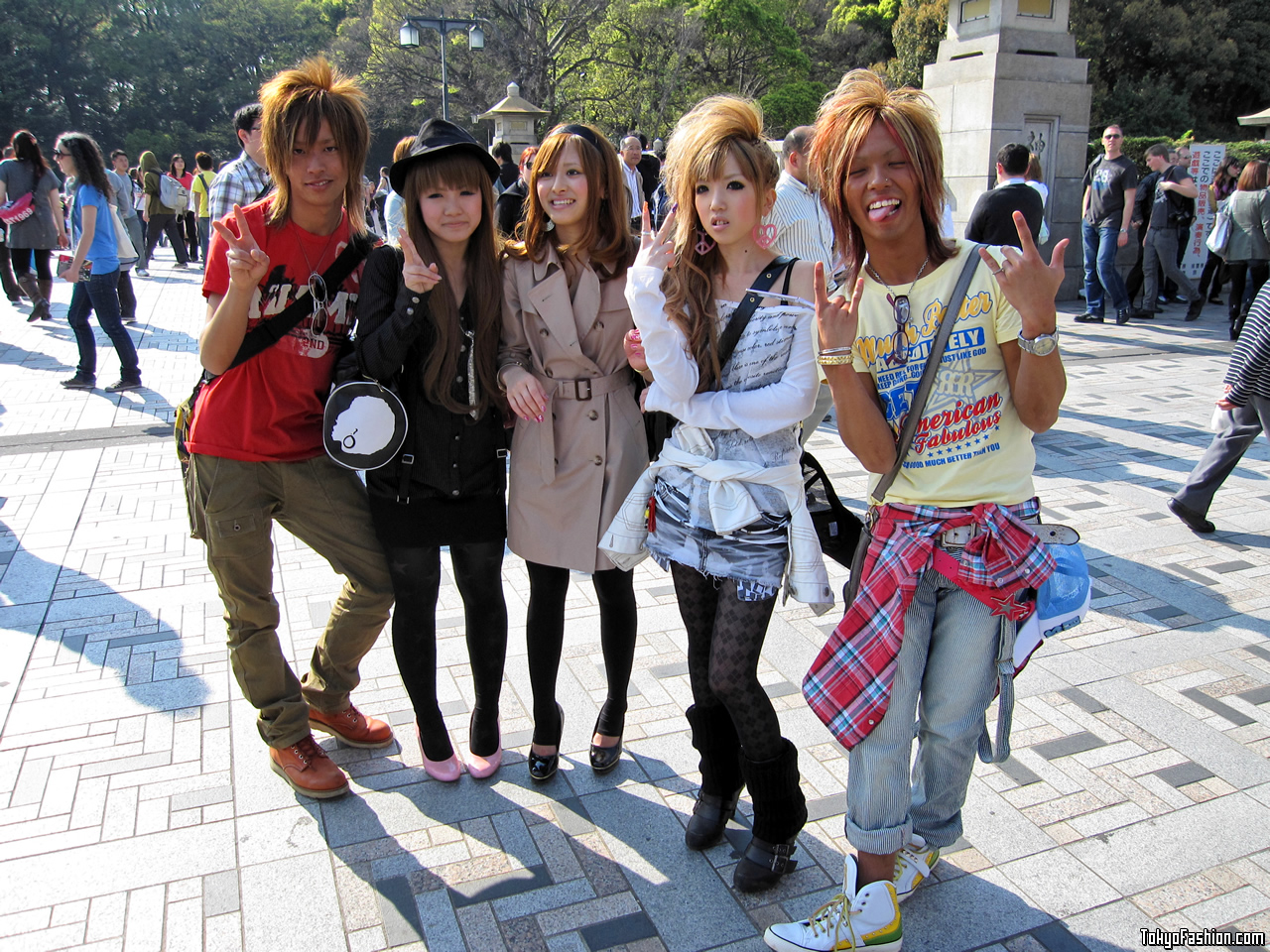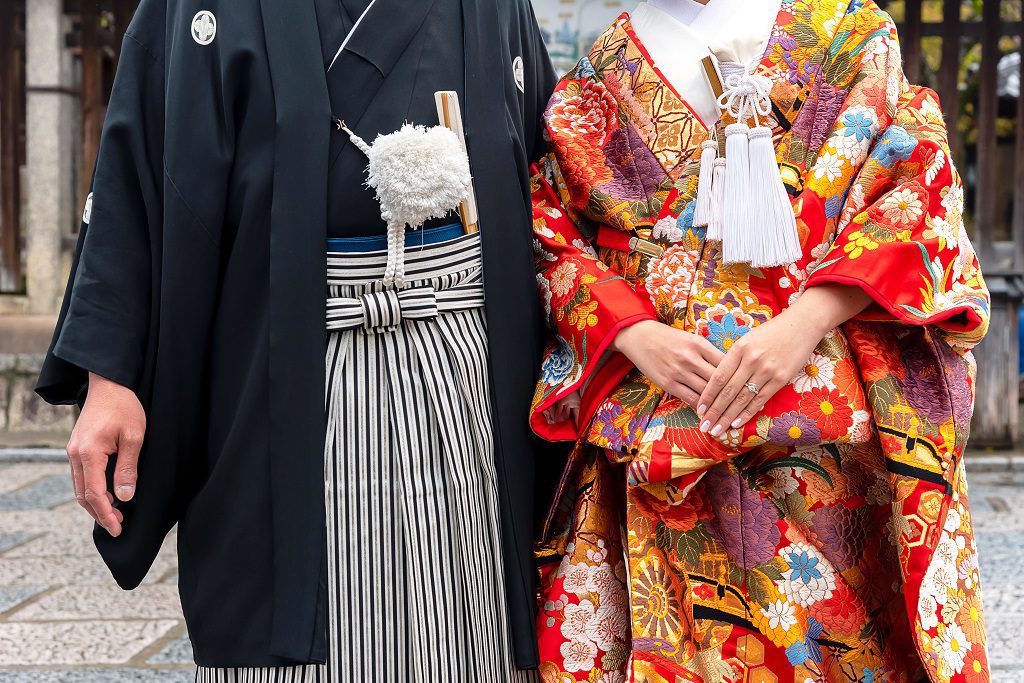Win a Free Trip to Japan!
Experience cherry blossoms and ancient temples
Japanese fashion and culture represent a vibrant tapestry woven from various historical influences and modern trends. Over the centuries, elements from different cultures have enriched Japan’s traditional garments, giving them unique significance. Today, contemporary styles intertwine with street fashion to create diverse expressions of identity. As we explore this dynamic landscape, we’ll delve into the importance of inclusivity and the future directions that celebrate the rich diversity inherent in Japanese fashion and culture. This colorful journey highlights the voices and innovative designs that continually shape the fashion narrative in Japan.
The Historical Influence of Various Cultures on Japanese Fashion
Japanese fashion and culture flourish due to their rich tapestry woven from various influences over centuries. Historically, Japan has been at the crossroads of significant cultural exchanges, which shaped its unique fashion identity.
Key influences include:
- China: Ancient trade routes introduced Chinese silk, influencing kimono designs. The use of luxurious fabrics laid the groundwork for modern aesthetic standards.
- Western Countries: The Meiji Restoration in the late 19th century marked a pivotal change. Western attire became popular, leading to blends of traditional and modern styles. For instance, you can see Western elements in contemporary kimonos.
- Korea: The influence of Korean hanbok can be observed in specific silhouettes and patterns found in traditional Japanese wear. This cross-cultural exchange enriched textile designs.
- India: The introduction of rich textiles, such as indigo dyeing techniques, can be traced back to ancient trade with India, enhancing the vibrancy of Japanese fabrics.
Comparison Table of Influential Cultures on Japanese Fashion
| Culture | Influence Type | Key Contribution |
|---|---|---|
| Chinese | Fabric & Design | Silks and kimono patterns |
| Western | Garment Styles | Adoption of suits and casualwear |
| Korean | Silhouette & Patterns | Traditional clothing silhouettes |
| Indian | Textiles & Dyeing | Indigo and vibrant colors |
This intricate blend of influences highlights how Japanese fashion and culture evolves, standing as a testament to adaptability and creativity. As these elements converge, they present a holistic view of Japan’s clothing history, paving the way for modern interpretations and future innovations.

Traditional Japanese Clothing and Its Significance
Traditional Japanese clothing, such as the kimono, yukata, and hakama, reflects deep cultural roots and historical significance. Each garment serves as a canvas for the rich tapestry of Japanese Fashion and Culture. Here’s how these garments contribute to Japan’s identity:
- Kimono: This iconic attire symbolizes elegance and tradition. Worn on special occasions, it showcases intricate designs and vibrant colors that often carry family or cultural meanings.
- Yukata: Made from cotton and often worn in summer, the yukata is a casual version of the kimono. It reflects a more relaxed attitude towards vibrant festivities, especially during summer festivals.
- Hakama: These pleated trousers emphasize both formality and functionality. Traditionally worn by samurai, hakama now symbolizes scholarly pursuits when donned by students during formal ceremonies.
Significance of Traditional Attire
- Cultural Identity: Traditional clothing embodies Japanese values, beliefs, and aesthetic sensibilities. It cultivates national pride and fosters a sense of belonging.
- Social Status: Historically, the type of fabric and design indicated one’s social status. Today, this classification persists during weddings and ceremonies where specific garments are culturally recognized.
- Artisan Craftsmanship: The techniques used in creating traditional garments involve intricate craftsmanship and dedication, highlighting the artistic side of Japanese Fashion and Culture.
Overall, understanding traditional Japanese clothing illuminates how history and craftsmanship intertwine in Japan, promoting continuity and appreciation for cultural diversity.
Modern Japanese Fashion Trends and Their Global Impact
Modern Japanese fashion and culture have transcended borders, influencing global trends significantly. As fashion enthusiasts worldwide look to Japan for inspiration, several key characteristics of this cultural phenomenon stand out:
- Innovative Designers: Renowned designers like Yohji Yamamoto and Issey Miyake challenge traditional aesthetics, blending art and usability. Their unique approaches showcase the intersection of Japanese craftsmanship and contemporary style.
- Streetwear Influence: Tokyo’s vibrant Harajuku district epitomizes youth culture and street fashion. Here, diverse styles merge – from punk to Lolita, creating a forum of self-expression that inspires global streetwear trends.
- Global Collaborations: Partnerships between Japanese brands and international fashion houses, such as Comme des Garçons and Nike, illustrate the worldwide appeal of Japanese styles. These collaborations often result in unique, limited-edition pieces that fuse Eastern and Western influences.
- Sustainable Practices: Modern Japanese fashion increasingly embraces sustainability, showcasing eco-friendly materials and ethical production methods. This trend resonates globally, influencing other countries to adopt similar practices.
| Trend | Global Impact |
|---|---|
| Innovative Design | Introduction of avant-garde aesthetics |
| Streetwear Culture | Rise of eclectic street styles globally |
| International Collaborations | Wider accessibility of Japanese aesthetics |
| Sustainable Fashion | Promotion of eco-conscious fashion choices |
Ultimately, the relationship between modern Japanese fashion and culture reflects a rich dialogue between tradition and innovation, setting a benchmark for diversity in the global fashion landscape.
The Role of Street Fashion in Expressing Diversity
Street fashion in Japan serves as a vibrant canvas showcasing the diversity within Japanese Fashion and Culture. Unlike traditional styles, street fashion evolves rapidly and integrates influences from various subcultures, making it a dynamic reflection of individual expression. This unique facet of Japanese fashion allows people to challenge norms and celebrate personal identities.
Key characteristics of street fashion include:
- Variety of Styles: From the whimsical Harajuku looks to the edgy Gyaru trends, street fashion encompasses a plethora of styles that cater to different tastes.
- Cross-Cultural Influences: Many street styles borrow elements from Western cultures, blending them with Japanese aesthetics. For instance, punk influences can often be observed in the looks of Tokyo’s youth.
- Creative Customization: Individuals often personalize their outfits with DIY modifications, showcasing their unique personalities and standing out in a crowd.
To illustrate, the following table highlights some popular street fashion styles in Japan:
| Style | Description | Cultural Influence |
|---|---|---|
| Harajuku | Playful, colorful, and often extravagant outfits | Western pop culture, anime |
| Gyaru | Bold makeup and trendy attire | California beach culture |
| Lolita | Victorian-inspired dresses | Western Victorian fashion |
Through these hybrid styles, street fashion significantly contributes to the dialogue on diversity in Japanese Fashion and Culture, empowering individuals to express themselves freely and challenge societal norms.

Exploring Regional Styles within Japan
Japanese Fashion and Culture showcase a vibrant tapestry of regional styles, each reflecting a unique identity, tradition, and historical influence. Understanding these styles enhances our appreciation for Japan’s fashion diversity. Here are notable regional fashion influences:
-
Kanto Region (Tokyo and surrounding areas)
- Features: Urban streetwear with a mix of traditional elements.
- Influences: Modern trends from global fashion capitals, resulting in a fusion of styles.
-
Kansai Region (Osaka, Kyoto)
- Features: Elegant kimono styles and colorful obi belts.
- Influences: Rich cultural heritage, especially in textile arts and traditional craftsmanship.
-
Okinawa
- Features: Bright colors, tropical prints, and lightweight fabrics.
- Influences: Indigenous Ryukyu culture and Southeast Asian aesthetics, promoting comfort and ease in dressing.
-
Hokkaido
- Features: Practical clothing suited for colder climates, often incorporating natural fibers.
- Influences: Indigenous Ainu culture and a focus on functionality and sustainability.
Comparison Table of Regional Styles
| Region | Key Features | Cultural Influences |
|---|---|---|
| Kanto | Urban streetwear, traditional elements | Global fashion, modern trends |
| Kansai | Elegant kimono, colorful obi | Textile arts, traditional craftsmanship |
| Okinawa | Tropical prints, bright colors | Indigenous culture, Southeast Asian styles |
| Hokkaido | Practical clothing, natural fibers | Ainu culture, functionality, sustainability |
By exploring these regional styles within Japanese Fashion and Culture, we unveil the rich storytelling embedded in attire, fostering a deeper understanding of Japan’s diverse cultural landscape.
The Intersection of Technology and Fashion in Japan
Japan brilliantly intertwines technology and fashion, transforming the landscape of Japanese Fashion and Culture. Through innovative methods, designers experiment and redefine traditional aesthetics, creating a forward-thinking industry. Here’s how technology revolutionizes fashion in Japan:
- Wearable Tech: From smart fabrics to fitness-tracking wearables, Japanese designers, such as Issey Miyake, integrate technology to enhance functionality. This emphasis on functionality does not compromise style, allowing for chic yet practical clothing.
-
Digital Fabrication: Techniques like 3D printing enable designers to create unique fabrics and intricate designs previously unattainable. Notable example:
Traditional Method Digital Fabrication Hand-stitched patterns Precision 3D-printed designs - Virtual Fashion Shows: With the pandemic’s impact, virtual runway experiences became crucial. Designers showcase collections online, reaching global audiences while pushing the boundaries of fashion presentation.
- E-commerce Evolution: Japanese online retail platforms combine AR and AI, personalizing shopping experiences and enhancing customer engagement through interactive features.
As technology continues to evolve, Japanese Fashion and Culture stands as a testament to creativity and innovation. This fusion not only drives industry growth but also expresses the diverse narratives of contemporary Japanese society.
Cultural festivals and their impact on fashion
Cultural festivals play a vital role in shaping Japanese Fashion and Culture, serving as vibrant showcases for the country’s rich heritage and artistry. These festivals not only celebrate traditions but also influence contemporary fashion trends. Here are some key ways they impact fashion:
- Showcase Traditional Attire: Festivals often feature traditional garments such as kimonos, yukatas, and hakama. This exposure helps preserve craftsmanship and encourages younger generations to embrace their cultural roots.
- Inspiration for Designers: Many designers draw inspiration from festival aesthetics. For instance, the intricate patterns and colors seen during the Gion Matsuri in Kyoto often translate into modern collections.
- Evolution of Styles: As festivals adapt to modern sensibilities, they introduce innovative elements. The Sakuramasu Matsuri, celebrating cherry blossoms, has inspired numerous street fashion trends that blend traditional motifs with contemporary designs.
- Diverse Representation: Festivals in different regions highlight local styles and materials, showcasing the diversity within Japanese Fashion and Culture. For instance, the Nebuta Matsuri in Aomori features vibrant floats and costumes, encouraging a unique local take on fashion.
In summary, cultural festivals not only honor Japan’s history but also act as catalysts for creativity and inclusivity in Japanese Fashion and Culture, ultimately fostering a deeper appreciation for its diversity.

The Importance of Inclusivity in Japanese Fashion Design
Inclusivity in Japanese fashion and culture represents a vital shift towards representation and acceptance, reflecting the diversity of Japan’s population. As the landscape of fashion evolves, it must embrace varying identities, sizes, and backgrounds. Here are key aspects that underscore the significance of inclusivity in this realm:
- Broad Representation: By showcasing different body types, ethnicities, and genders, designers can create garments that resonate with a wider audience. This approach not only enhances brand loyalty but empowers individuals to express themselves confidently.
- Cultural Sensitivity: Understanding and respecting Japan’s rich mosaic of cultures bolsters inclusivity. Designers who draw inspiration from diverse heritage contribute to a more authentic representation of Japanese Fashion and Culture.
- Consumer Demand: The modern market is leaning towards brands that prioritize inclusivity. Consumers are increasingly seeking authenticity and brands that resonate with their values, thus prompting designers to rethink their approaches.
- Innovative Designs: Inclusive fashion can lead to fresh ideas. By integrating diverse perspectives, designers spark new creativity, elevating Japanese Fashion and Culture to global platforms.
- Community Building: Emphasizing inclusivity fosters a sense of belonging. Fashion can serve as a powerful medium to bridge gaps, bringing together various communities and highlighting diverse voices within Japan.
In conclusion, the importance of inclusivity in Japanese fashion design not only elevates the industry but also strengthens the cultural tapestry of Japan. By embracing diversity, the world of fashion continues to celebrate the unique essence of Japanese Fashion and Culture.
Highlighting Diverse Voices and Designers in Japan
Japanese Fashion and Culture thrives on innovation and creativity, driven by a growing array of diverse voices and designers. This vibrant scene not only showcases the artistic talents from Japan but also reflects the interplay of various cultural influences.
Key Designers and Influences:
- Yohji Yamamoto: Known for his avant-garde aesthetic, he redefines traditional silhouettes, promoting a dialogue between Eastern and Western fashion.
- Issey Miyake: Famed for his innovative use of fabric and technology, he emphasizes functionality combined with unique design principles.
- A Bathing Ape (BAPE): This streetwear brand encapsulates urban culture, illustrating how inclusivity and contemporary design appeal to global audiences.
The Rise of Emerging Designers:
- Tsumori Chisato: Incorporating vibrant colors and playful patterns, she captures rich narratives that celebrate individuality.
- Kiko Kostadinov: His work merges a European perspective with Japanese influences, contributing to an inclusive dialogue in fashion.
Community and Collaboration:
- Fashion collectives and mentorship programs empower aspiring designers from diverse backgrounds, fostering creativity and innovation in Japanese Fashion and Culture.
Why It Matters:
Highlighting these voices allows the fashion industry to reflect the varied societal narratives while pushing boundaries. Ultimately, this diversity enriches Japanese Fashion and Culture, ensuring it remains a vibrant, evolving tapestry that resonates globally.
Future Directions for Diversity in Japanese Fashion and Culture
As we look ahead, the future of Japanese Fashion and Culture promises to be dynamic, inclusive, and reflective of a broader array of voices. Here are some anticipated trends:
- Increased Representation: Emerging designers from various backgrounds are gaining visibility. They will continue to challenge traditional aesthetics, promoting diversity in Japanese Fashion and Culture.
- Global Collaborations: Partnerships between Japanese brands and international artists will become more common. This fusion will introduce new styles that blend unique cultural elements.
- Sustainable Practices: The focus on sustainability will reshape design choices. By prioritizing eco-friendly materials and ethical production methods, the fashion industry can embrace diversity while being responsible.
- Digital Innovation: The advent of technology will redefine how we experience fashion. Virtual fashion shows and augmented reality platforms will allow diverse creators to showcase their work globally.
- Cultural Dialogue: Ongoing conversations about cultural appropriation versus appreciation will deepen. Brands that engage proactively and respectfully with cultural narratives will lead the way.
- Education and Awareness: Institutions will prioritize programs that educate designers about cultural sensitivity, encouraging a richer understanding of Japanese Fashion and Culture.
In summary, these evolving trends herald a future where Japanese Fashion and Culture not only celebrates diversity but also actively integrates it into its core. This inclusive approach will enrich the fashion landscape, making it a vibrant reflection of society as a whole.
Frequently Asked Questions
What are some key elements that define diversity in Japanese fashion?
Diversity in Japanese fashion is characterized by a blend of traditional and contemporary styles, showcasing various aesthetics that range from street fashion to high couture. Key elements include the use of vibrant colors, unique patterns, and a fusion of cultural influences from both domestic and international sources. Designers often embrace sustainability while celebrating traditional textiles and craftsmanship, creating a rich tapestry that reflects modern attitudes while honoring Japan’s historical roots.
How does Japanese culture influence its fashion trends?
Japanese culture plays an integral role in shaping fashion trends, where cultural symbols, historical periods, and even subcultures contribute to the fashion narrative. Elements like kimono craftsmanship, the concept of ‘wabi-sabi’ (finding beauty in imperfection), and street fashion phenomena such as Harajuku styles all reflect cultural values and social commentary. The interplay between ancient traditions and cutting-edge design fosters an environment that is continually evolving, yet steeped in the profound heritage of Japan.
Why is celebrating diversity in Japanese fashion important?
Celebrating diversity in Japanese fashion is crucial as it promotes inclusivity and encourages dialogue between different cultural expressions. It allows for the appreciation of various identities and backgrounds represented in the fashion landscape. This celebration can inspire creativity and innovation, leading to new collaborations and the breaking down of boundaries within the industry. Furthermore, it empowers marginalized voices and showcases a broader spectrum of perspectives that enriches Japan’s cultural tapestry.
What role do festivals play in showcasing Japanese fashion and culture?
Festivals in Japan serve as vibrant platforms for showcasing the rich interplay between fashion and culture. Events such as the Gion Matsuri in Kyoto or the Awa Odori dance festival highlight traditional attire, such as kimono, while modern fashion is often integrated in contemporary interpretations. These festivals allow for the celebration of local craftsmanship, narratives, and community, offering visitors a unique insight into how traditional customs are expressed and reinvented through fashion.
How can one experience Japanese fashion diversity beyond traditional forms?
Experiencing Japanese fashion diversity beyond traditional forms can be achieved by exploring urban areas like Tokyo and Osaka, where street fashion reflects a blend of styles from various influences. Visiting local boutiques, attending fashion shows, or participating in cultural workshops focused on contemporary design can provide deeper insights. Moreover, following fashion bloggers or influencers who document the ever-evolving scenes can further illuminate the dynamic landscape of Japanese fashion, highlighting the creativity found in everyday expressions.
